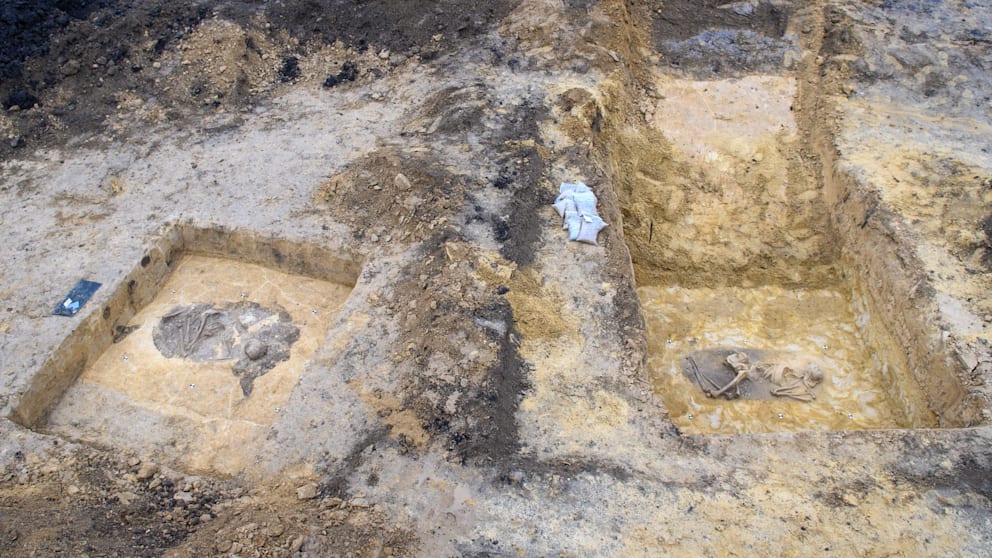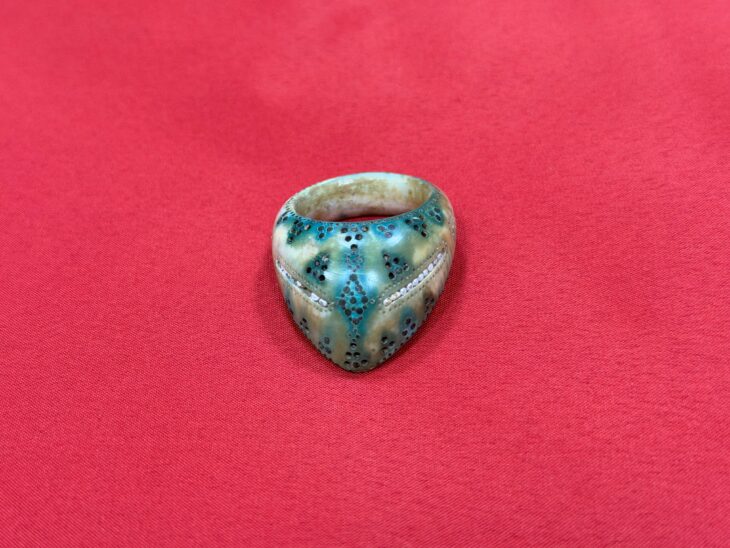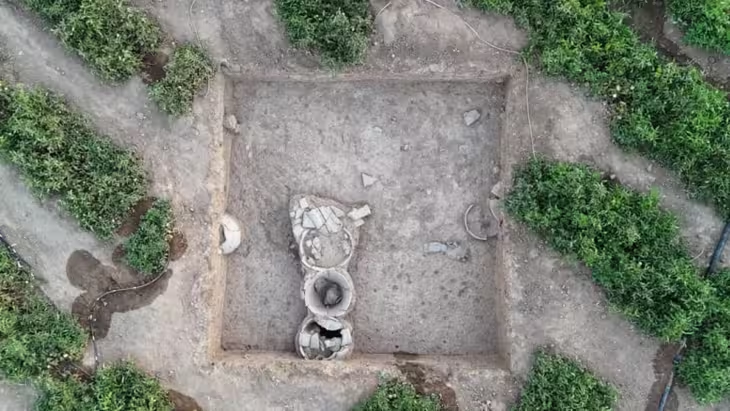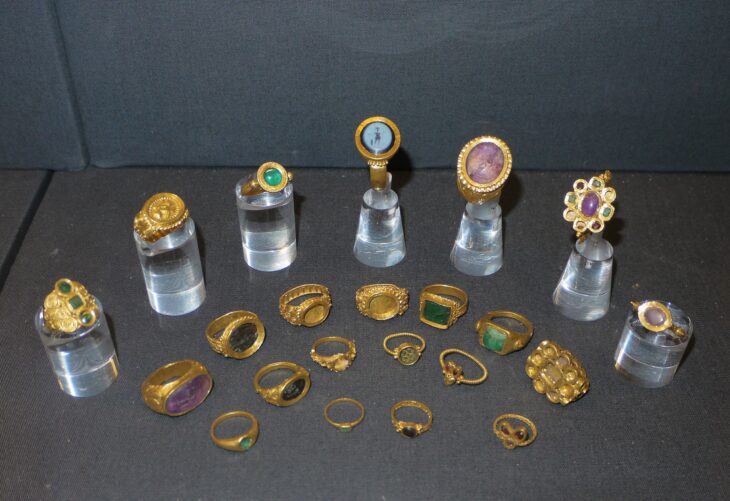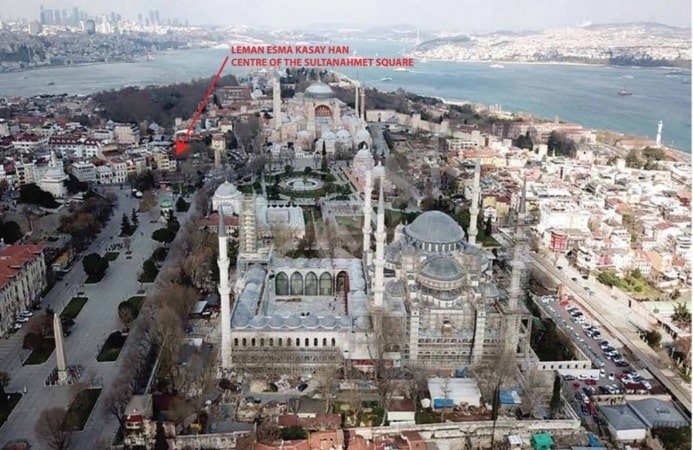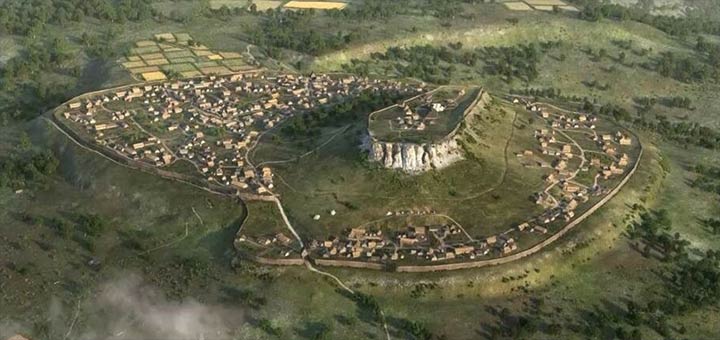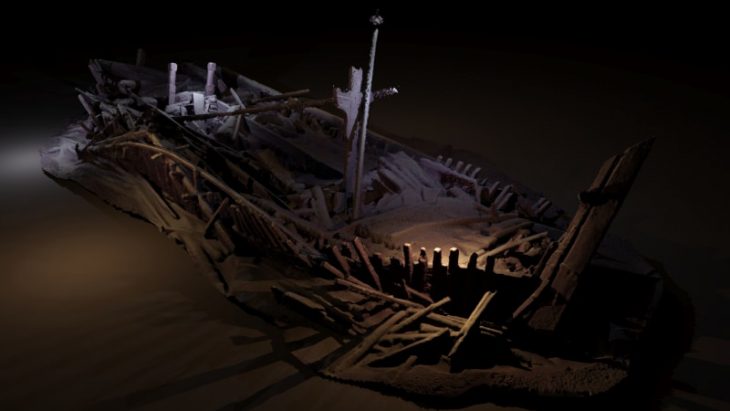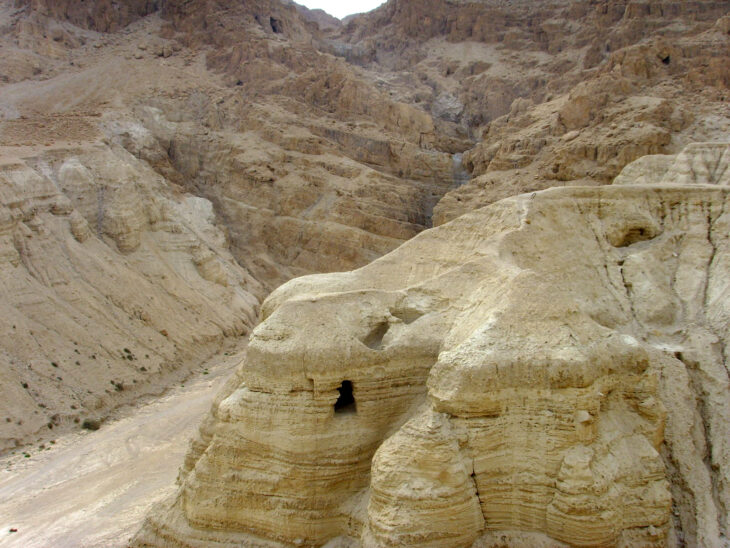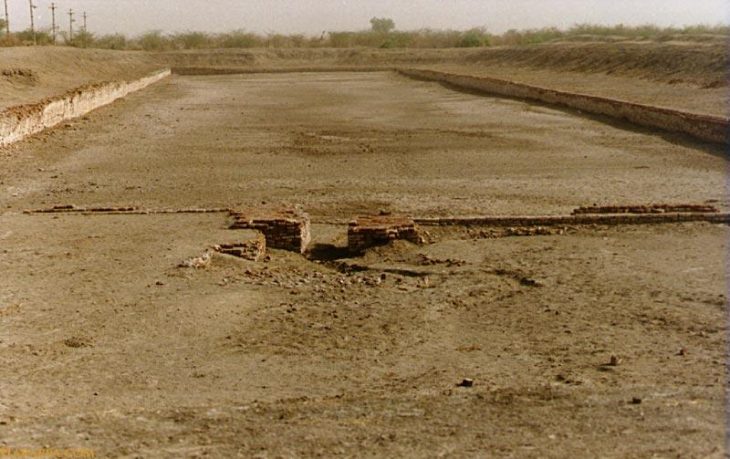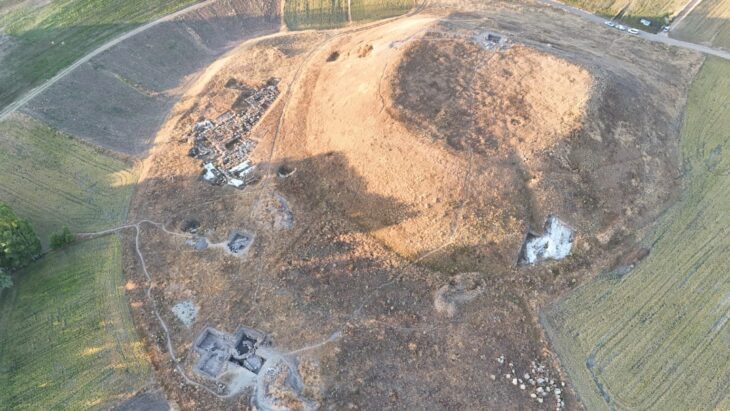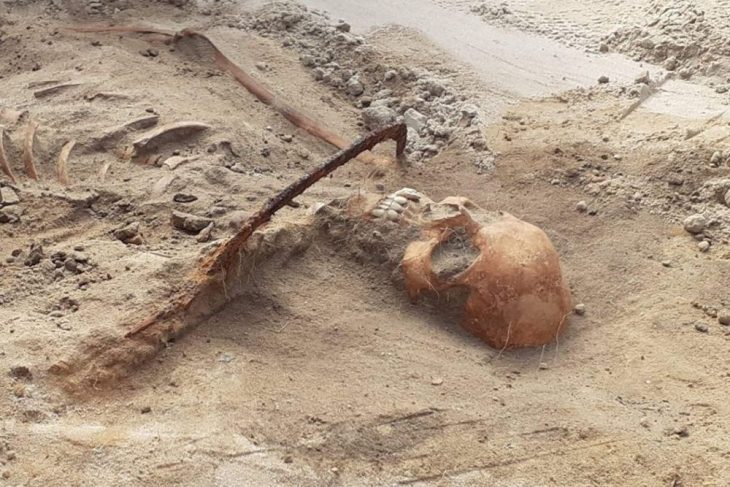Extraordinary discovery during the construction of a New Power Line: Archaeologists unearth a cemetery from the Copper Age with Three Warrior Graves. One of the deceased even wore part of his armor.
Archaeologists have discovered an approximately 4,500-year-old cemetery with ten graves from the Bell Beaker culture near Förderstedt, located in the Salzlandkreis district of Germany.
Currently, three particularly well-preserved burials have been uncovered. The deceased, buried in a hunched position facing east, were interred under a common burial mound. Women were laid on the right side, while men were on the left side of the body.
“A common burial mound covered all three deceased,” said project leader Susanne Friederich from the State Office for Heritage Preservation and Archaeology of Saxony-Anhalt.
In the Bell Beaker culture, the dead were always buried in a hunched position facing east. The name comes from the bell-shaped ceramic vessels that were filled with food and placed in the grave for the journey to the afterlife.
📣 Our WhatsApp channel is now LIVE! Stay up-to-date with the latest news and updates, just click here to follow us on WhatsApp and never miss a thing!!
Among the most striking discoveries are the grave goods found within the tombs. In one grave, archaeologists unearthed a bell-shaped ceramic vessel, approximately 15 centimeters in diameter, filled with food to accompany the deceased on their journey to the afterlife.
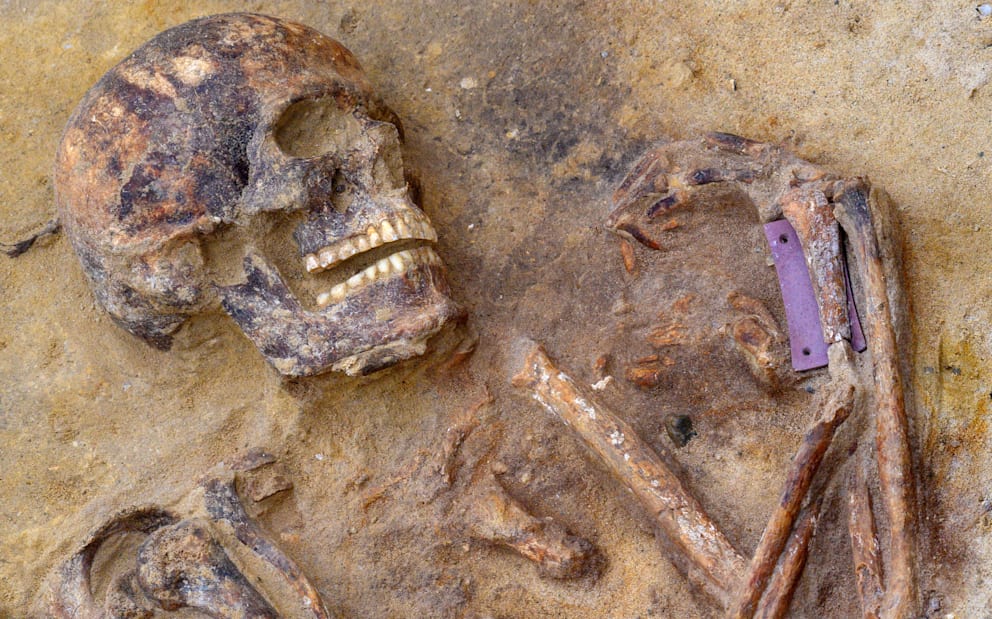
This vessel was found in one of the three central burials. In the second burial, a stone arm guard was discovered. The archaeologist stated, “This indicates a male hunter or warrior.” The arm guard, measuring approximately eight by four centimeters, cushioned the snapping bowstring and thus prevented injuries.
“The third grave is remarkably well-preserved. In the back area of a warrior, two arrowheads were found. They were very close together,” Friederich noted. “Additionally, a quiver was faintly outlined in the sediment. This container for the arrows was made of organic material and has decayed. Only a different color and structure in the sediment indicate that the deceased was buried with his equipment.”
Graves Well-Preserved by Loess Clay
Although the graves were discovered at a depth of about two meters, they were originally much deeper or well-protected by a high burial mound. Excavation leader Christian Lau explained, “The graves were not placed on the surface, as is often observed with artificially mounded graves. Instead, the burial pit was dug through the upper soil layers and the loess clay down to the sand and filled with unmixed loess clay.”
This has allowed the bones to remain very well preserved. If they had been lying directly in the sand, the state of preservation would have been significantly worse. The graves will now be excavated in their entirety and examined more closely in the laboratory.
The excavations are taking place in advance of the expansion of the direct current line “SuedOstLink.” The entire power line is approximately 540 kilometers long, stretching from Wolmirstedt near Magdeburg to the Isar site near Landshut in Bavaria.
Cover Image Credit: Klaus-Dietmar Gabbert/dpa

